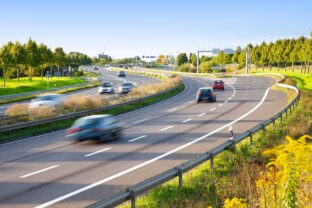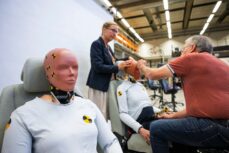Practical solutions for cutting car traffic in city centers

Drastically reducing the number of cars on the roads in cities is first and foremost an attempt to improve air quality and, with it, quality of life. After completing their study, the researchers came up with no less than 12 measures that can be taken in order to considerably reduce the number of cars on the road in urban areas.
Taxing congestion
This can take several forms, starting with the introduction of tolls to enter and drive around the city. London, which is a pioneer in this field, is said to have reduced car traffic in the city by 33% simply by implementing its congestion charge measure. The revenue generated by this tax could be used for investment in public transport or the creation of new infrastructure for soft mobility.
Rethinking parking
Many cities in Europe have already decided to remove parking spaces and thus modify the corresponding traffic lanes. The idea is to be able to replace these parking bays with car-free streets, bicycle lanes or pedestrian walkways. By doing this, a city like Oslo has managed to reduce car traffic by almost 20% in three years.
Limited traffic zones
More and more large cities are restricting car access to their city centers. This is notably the case in Rome, and soon in Paris. The aim is to encourage the use of public transport by restricting car access to the city center to residents or professionals. In Rome, this policy has reduced car traffic by 20% during restricted hours. As with tolls, the resulting fines can be used to develop public transport and soft mobility.
Ensuring mobility services for commuters
For work reasons, many commuters are accustomed to using their cars to travel from their homes to their workplaces in the city center. In several cities, such as Utrecht in the Netherlands, local authorities and private companies are working together to provide free public transport passes for their employees, as well as private shuttles to connect public transport stops to workplaces. More than a third of these commuters have reportedly given up driving to work during the week.
Charging for workplace parking
Another way to encourage employees to come to work by other means than by car is to introduce parking fees at their workplace. This has already been tested in Rotterdam in the Netherlands and Nottingham in England.
Improved workplace travel planning
Companies are also advised to limit their employees’ business trips by car as much as possible. This can be accompanied by the implementation of a fleet of bicycles and infrastructure to accommodate them near workplace premises.
University travel planning
The same applies to universities. Students and professors are encouraged to use public transport and active transportation (cycling or walking) to get to and from campus. One of the best examples of this is Bristol, England, which has, for example, favored the development of bicycle paths.
Developing mobility services for universities
Universities can use various initiatives to help steer students away from car use, such as a free public transport subscriptions or campus shuttles, in collaboration with the city authorities.
Encouraging car sharing
Over the years, carpooling has proven to be particularly effective in cities such as Bremen, Germany, and Genoa, Italy, in the aim of transporting a maximum number of people in a minimum number of cars. Awareness campaigns have been carried out to encourage workers to opt for this shared mode of travel.
School travel planning
Students and their parents are strongly encouraged to walk, bike or, at worst, carpool to school. This should be accompanied by improvements to nearby bicycle infrastructure.
Personalized travel planning
More and more cities have developed customized travel plans for residents to help them discover their city by walking, biking or using public transport. The idea is to encourage soft mobility while also promoting certain sites.
An app for sustainable mobility
Finally, one of the last levers for reducing car traffic in the city is to develop applications that allow users to earn “points” for walking, cycling or taking public transport. The most efficient users then win vouchers or various rewards offered by local companies. This has been implemented in Bologna, Italy.
To come to these conclusions, the study reviewed nearly 800 peer-reviewed reports and case studies from across Europe, published since 2010.














